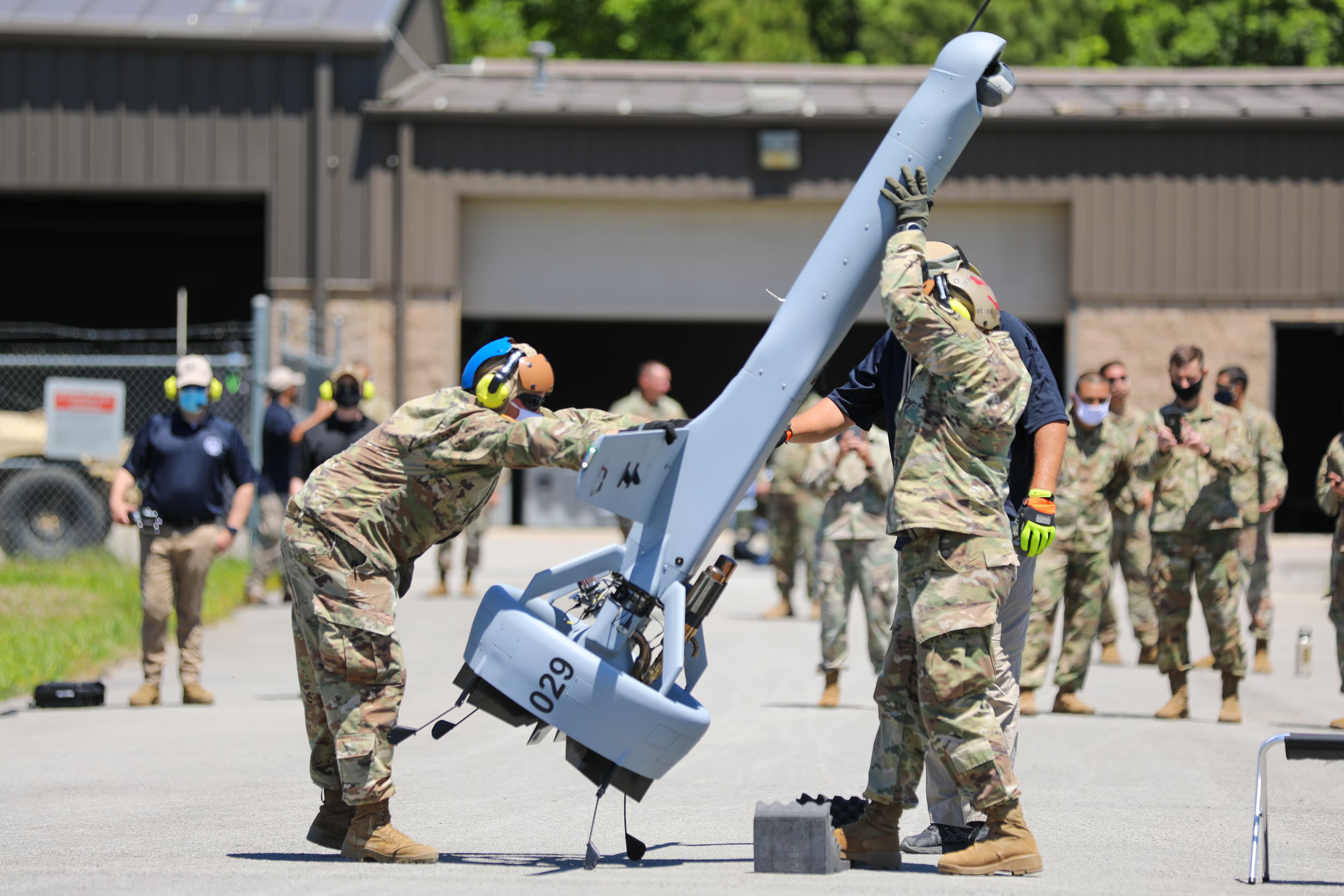WASHINGTON — The U.S. Army has given the green light to proceed into a competition to replace its aging, runway-dependent Shadow unmanned aircraft system with a new tactical drone.
The Army Requirements Oversight Council approved requirements for the service’s Future Tactical Unmanned Aircraft System, or FTUAS, in the form of an Abbreviated Capabilities Development Document, which will allow the program to move forward into a competitive prototyping phase.
The service has spent over a year assessing a variety of new and improved capabilities to replace the Textron-manufactured Shadow, culminating in a week-long rodeo earlier this year at Fort Benning, Georgia.
To help it evaluate requirements, the Army selected four UAS in 2019 and handed them over to soldiers to use and provide feedback on each system. The feedback helped shape how the service would choose requirements and how it would shape tactics, techniques and procedures for a future system.
Martin UAV and a Northrop Grumman team provided the V-Bat UAS, Textron brought its Aerosonde HQ, Arcturus-UAV offered up the Jump 20 system and L3Harris supplied the FVR-90 for the soldier evaluations.

Soldiers evaluated the drones during new equipment training, field training exercises, and Combat Training Center rotations across five Brigade Combat Teams. The effort included the training of 61 operators and 56 maintainers and resulted in over 1,500 flight hours across more than 500 separate flights, according to fiscal 2022 budget justification documents.
After seeing the four UAS perform, Maj. Gen. Wally Rugen, who is in charge of the Army’s vertical lift modernization efforts, said that he was hopeful the Army would get a revolutionary, not evolutionary, new tactical UAS capability that isn’t tied to a runway, that has a lower acoustic signature and that has far lower equipment requirements to transport the system organically within the unit.
Operators at the rodeo told reporters that compared to Shadow, all of the systems offered drastically improved capability within BCTs, including the ability to set up and fly in one-third the time it would take to set up Shadow. The systems also demonstrated autonomous take-off and landing, and the ability to fly in bad weather.
A couple of requirements for a FTUAS capability were still being debated shortly after the rodeo. The Army had yet to decide whether it would stick to the draft requirement to transport FTUAS in a Chinook or if it could be more flexible.
“We’ll see if the bar gets raised, but to me, I think it’s fine where it’s at right now,” Rugen said as the rodeo wrapped up.
Another requirement could be that the system has to be able to run on JP-8 fuel. Not all systems brought to the table use that fuel type while some already do or are on the path to getting there. In the draft requirements documents, the ability to use the fuel was listed as objective.
A service spokesperson told Defense News, in a recent statement, that because of the successful FTUAS demonstrations, “the Army is considering options for acceleration in addition to the base program.”
The Army, according to FY22 budget justification documents, plans to spend $36.4 million to support component development and $12 million to initiate a competitive prototyping and integration effort.
The Senate Armed Services Committee, in its markup of the FY22 defense policy bill, would increase funding for FTUAS, according to its executive summary. It has not yet been revealed how big of a boost the program would see if the increase makes it into the final legislation.
The service will move into a competitive prototyping phase in the fourth quarter of FY22 and will make a rapid fielding decision in the second quarter of FY25 followed by a full-rate production decision in the fourth quarter of FY25.
Jen Judson is an award-winning journalist covering land warfare for Defense News. She has also worked for Politico and Inside Defense. She holds a Master of Science degree in journalism from Boston University and a Bachelor of Arts degree from Kenyon College.








